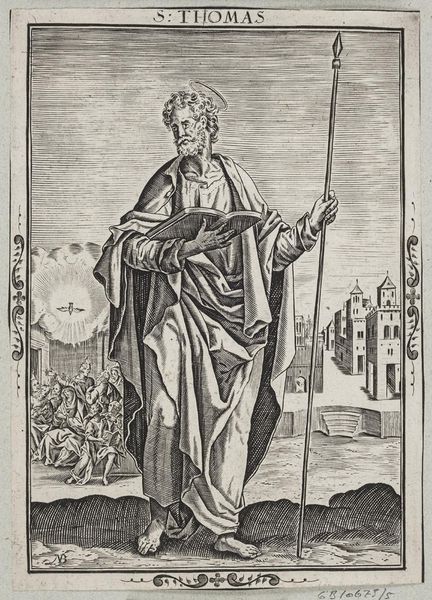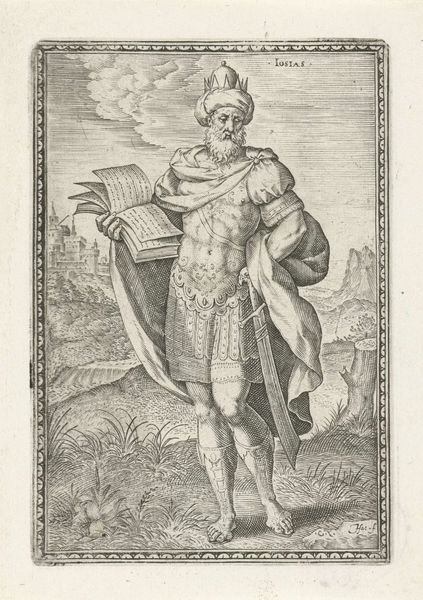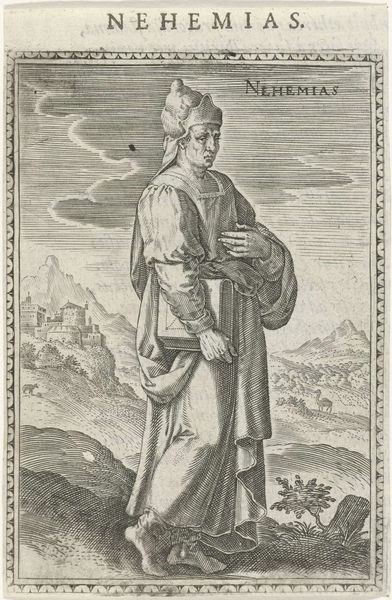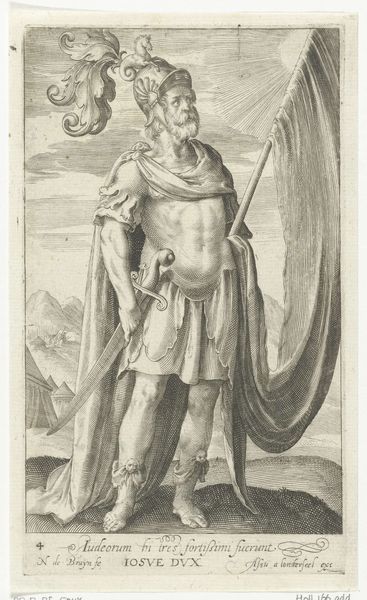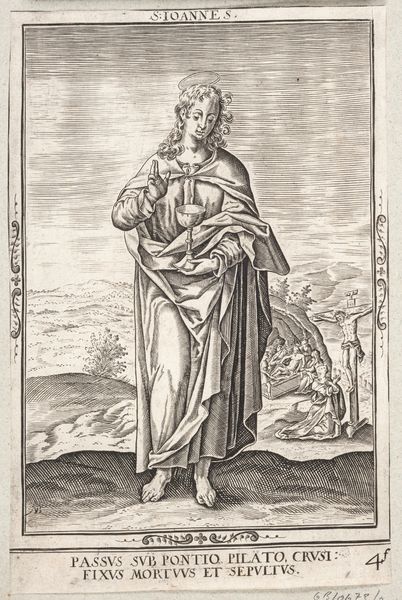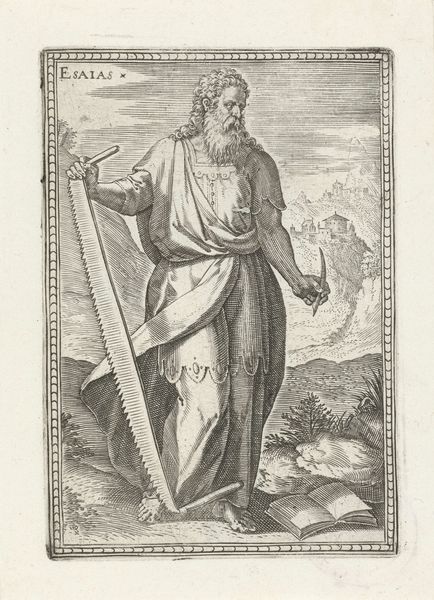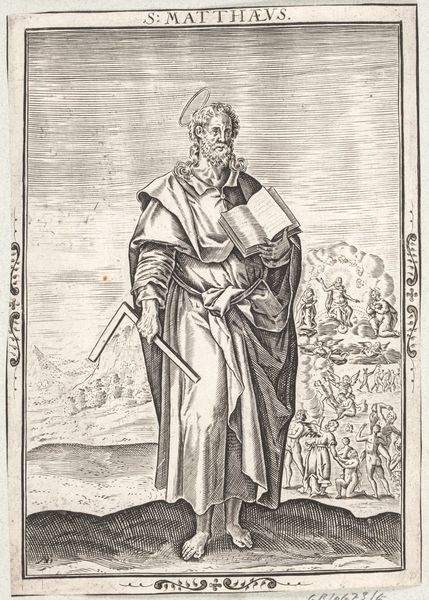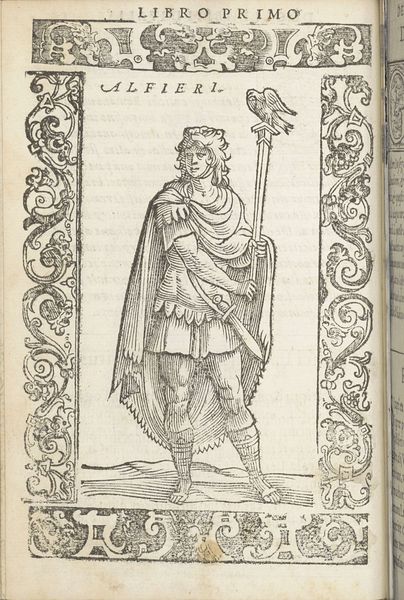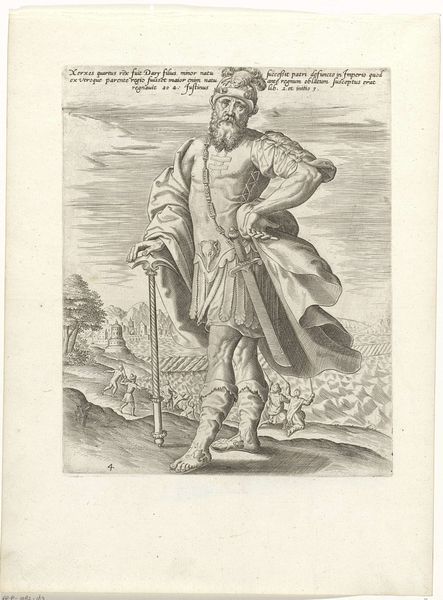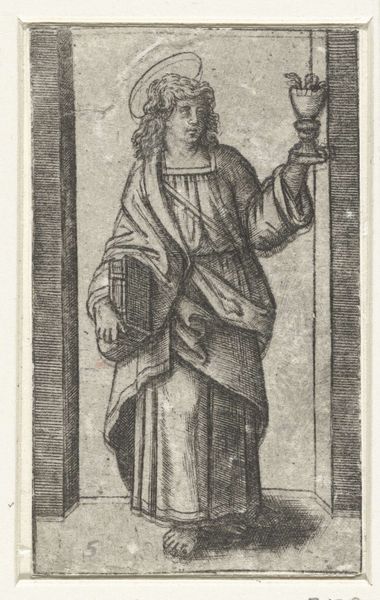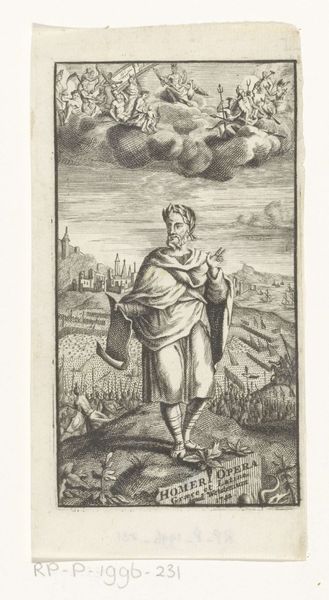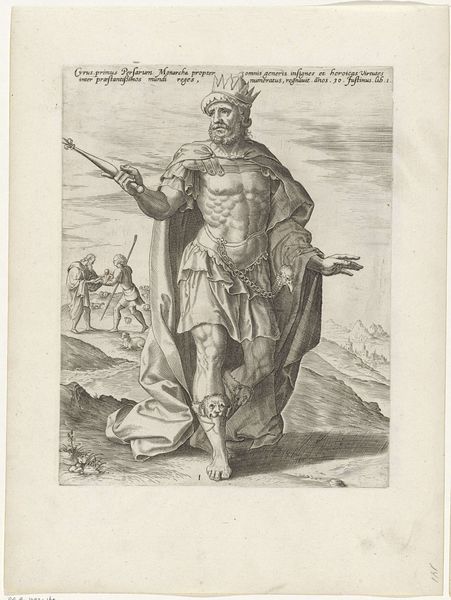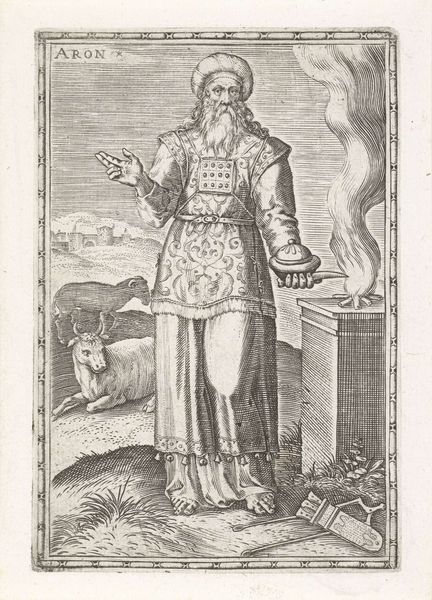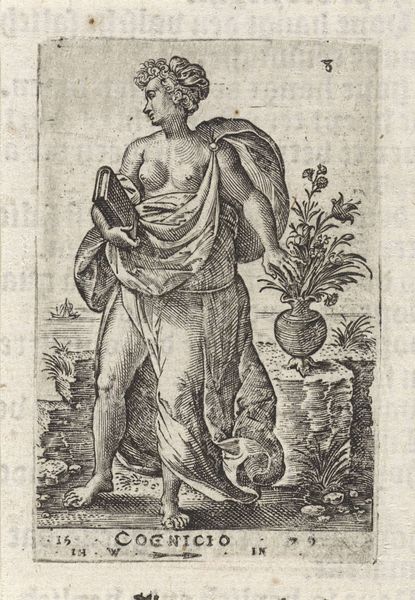
print, engraving
#
portrait
# print
#
mannerism
#
figuration
#
line
#
history-painting
#
engraving
Dimensions: height 114 mm, width 76 mm
Copyright: Rijks Museum: Open Domain
Editor: We're looking at "Jeremia," an engraving done around 1575 by Johann Sadeler I, currently housed in the Rijksmuseum. It’s striking how classical the figure appears, despite the somber subject matter usually associated with the prophet Jeremiah. What can you tell me about the historical context of its imagery? Curator: It’s interesting that you see him as classical. Mannerism, the style dominating at the time, reveled in artificiality, emotion, and exaggeration. While there’s a hint of classical contrapposto, his over-defined muscles and somewhat theatrical gesture suggest an almost exaggerated emotional display, perhaps reflective of his prophetic role. The figure exists for the display. Think of this work as part of a visual language used to reinforce the authority of religious and political figures during the Counter-Reformation. The circulation of prints like these played a huge role. Editor: So, its purpose wasn't purely devotional, but also societal? Curator: Exactly! Prints like this were disseminated widely, conveying messages of power and virtue beyond the church walls. Who had access, who controlled the visual language, and what was the effect of images on belief – that is important here. How might the public have responded to an idealized version of such an important figure in scripture? Editor: That makes so much sense. I hadn’t thought about it in terms of broader distribution. The availability of these images would shape perception in powerful ways. Curator: Precisely. By understanding the social and political functions these images played, we see the Renaissance and Mannerism as much more than artistic movements. The question of art’s accessibility is perennial. Editor: This makes me think about the role art plays today. Curator: Indeed. Studying pieces like this invites us to interrogate contemporary issues. Visual language and accessibility: always important.
Comments
No comments
Be the first to comment and join the conversation on the ultimate creative platform.
